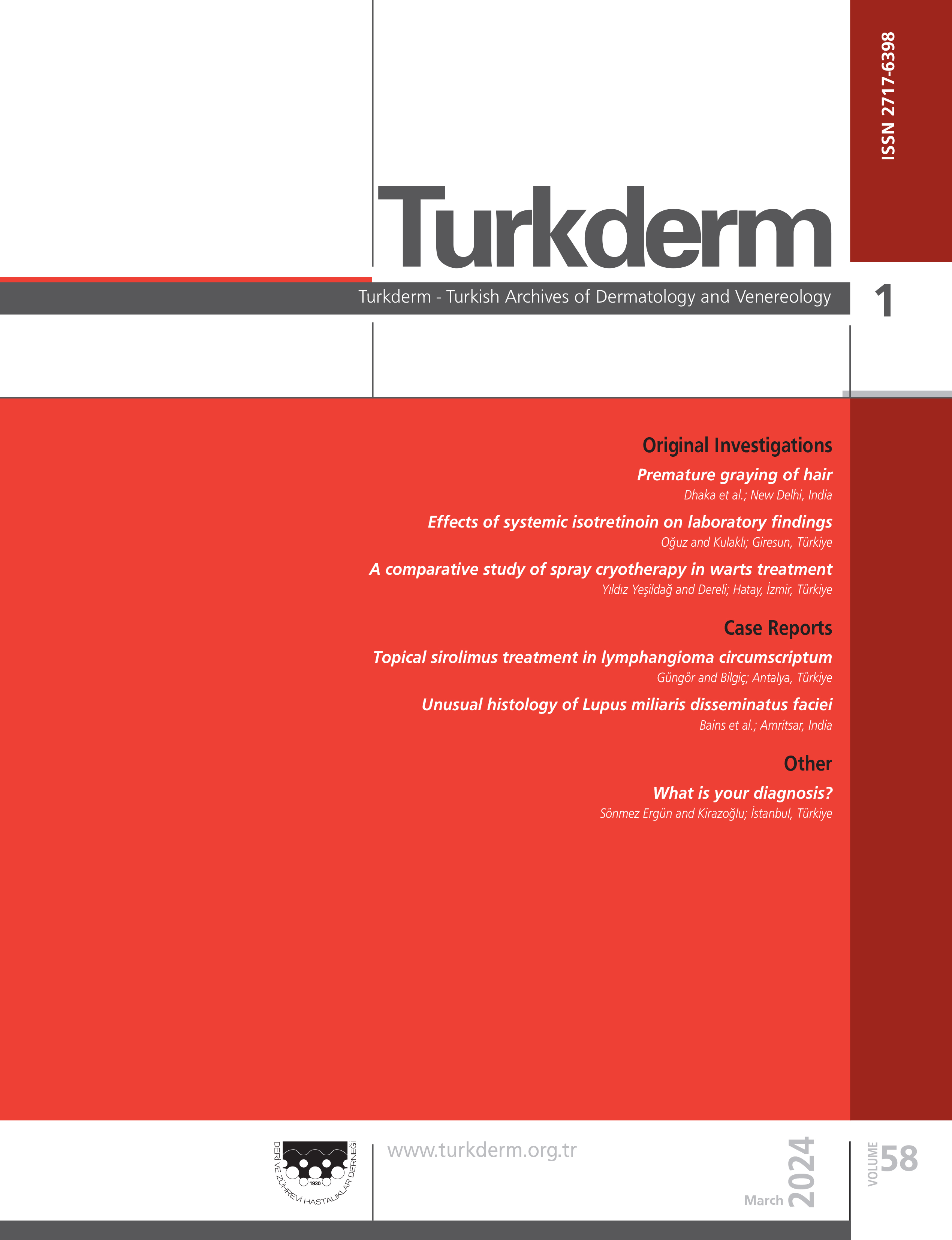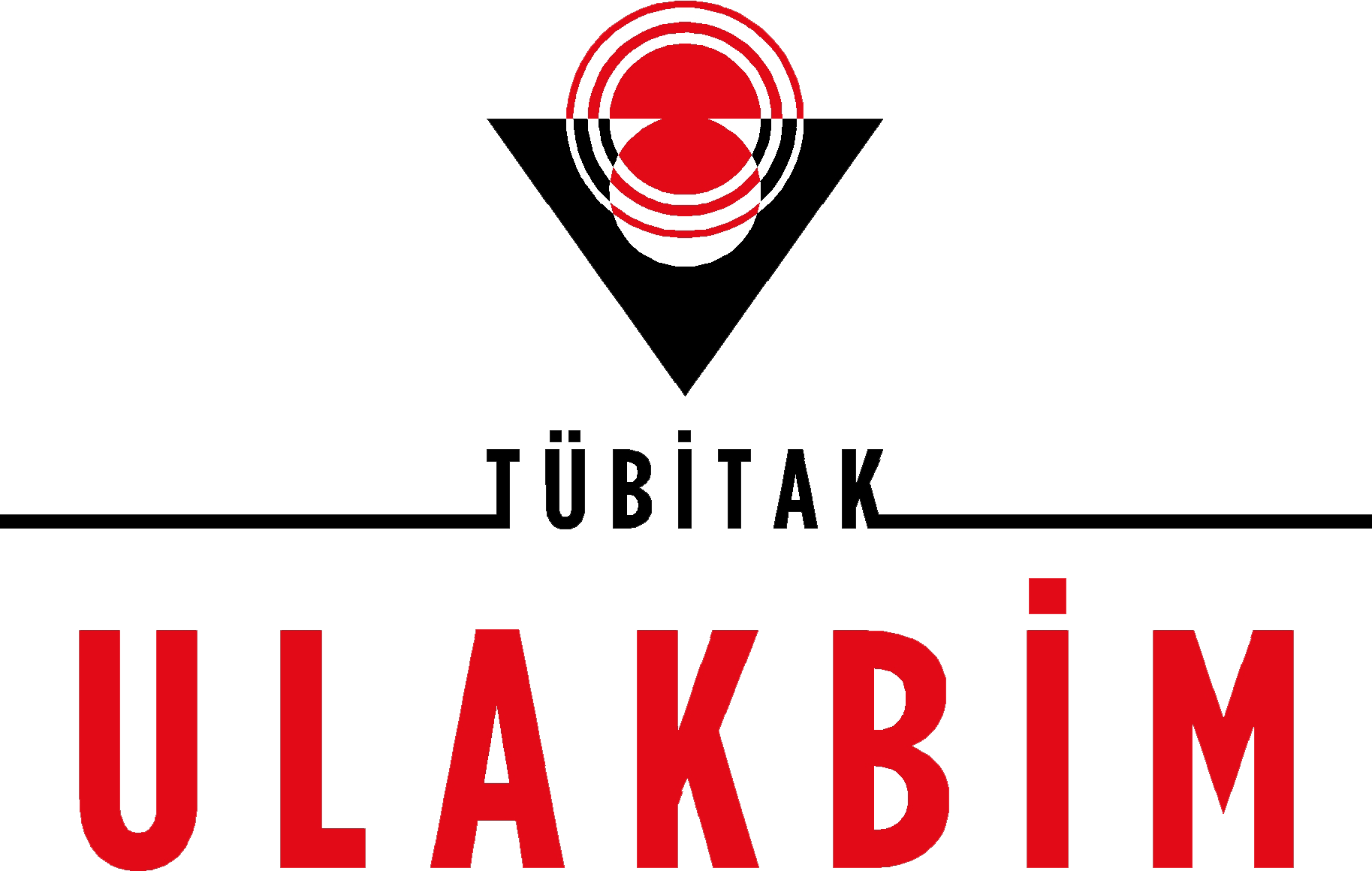Lipoid proteinosis (Urbach-Wiethe disease): A case report
Munise Daye1, Seda Doğan1, İnci Mevlitoğlu1, Sarenur Esener1, Hatice Toy21Department of Dermatology, Necmettin Erbakan University Meram Medical Faculty, Konya, Turkey2Department of Pathology, Necmettin Erbakan University Meram Medical Faculty, Konya, Turkey
Lipoid proteinosis, which is known as Urbach-Wiethe disease, was first described in 1929 as lipoidosis cutis et mucosae by Urbach and Wiethe. It is a rare autosomal recessive inherited genodermatosis. There are PAS-positive hyaline material deposits in the skin, mucosa and visceral organs. A 23-year-old man, who was suffering from swelling of the lower lip and a fissure on the inner side of the lip, presented to our outpatient clinic. On dermatological examination, there were lower lip edema and infiltration, as well as macroglossia. There were bilateral yellowish papules along his eyelashes. For his ocular findings; it was learned that he had been treated for trichiasis at his childhood. There were multiple atrophic scars on his face, elbows, axilla, knees, and the skin overlying his spinous processes. He had no hoarseness. There was no consanguinity between his mother and father. Physical examination was normal. Three punch biopsies were carried out from his tongue, lips and elbow with the preliminary diagnoses of lipoid proteinosis, Melkersson-Rosenthal syndrome, focal epithelial hyperplasia, amyloidosis, granulomatous cheilitis, atrofoderma, and anetoderma. Deposition of hyaline PAS-positive materials was observed on his histopathological examination. According to the clinical and histopathological findings, the patient was diagnosed as having lipoid proteinosis. Otorhinolaryngologists, ophthalmologists, dermatologists, and neurologists should keep this rare condition in mind in the differential diagnosis.
Keywords: Lipoid proteinosis, Urbach-Wiethe disease, hyalineLipoid proteinozis (Urbach-Wiethe hastalığı): Bir olgu sunumu
Munise Daye1, Seda Doğan1, İnci Mevlitoğlu1, Sarenur Esener1, Hatice Toy21Necmettin Erbakan Üniversitesi Meram Tıp Fakültesi, Dermatoloji, Konya, Türkiye2Necmettin Erbakan Üniversitesi Meram Tıp Fakültesi, Patoloji Anabilim Dalı, Konya, Türkiye
Urbach-Wiethe hastalığı olarak da bilinen Lipoid proteinozis; ilk kez Urbach ve Wiethe tarafından 1929 yılında lipoidozis cutis et mucosae ismi ile tanımlanmıştır. Nadir görülen ve otozomal resesif geçiş gösteren genodermatozdur. Deride, mukozada ve iç organlarda PAS-pozitif hiyalen madde birikimi bulunmaktadır. Yirmi üç yaşında erkek olgu, alt dudaktaki şişlik ve dudağın iç yüzünde oluşan çatlak nedeniyle polikliniğimize başvurdu. Dermatolojik muayenesinde; alt dudakta ödem ve infiltrasyon, dilde ise makroglossi vardı. Bilateral kirpik hattı boyunca lineer dizilimli, sarımsı renkli papüller gözlendi. Göz bulguları için, çocukluk döneminde trikiyazis tanısıyla tedaviler aldığı öğrenildi. Yüzde çok sayıda olmak üzere dirseklerde, dizlerde, koltuk altlarında, sırtta spinöz çıkıntılar üzerindeki deride atrofik skarlar mevcuttu. Ses kısıklığı yoktu. Olgumuzun anne ve babası arasında akrabalık ilişkisi yoktu. Sistem muayeneleri normaldi. Olgumuzun dil, dudak ve dirseğinden; lipoid proteinozis, Melkerson -Rosenthal sendromu, fokal epitelyal hiperplazi, amiloidoz, granülomatöz keilit, atrofoderma ve anetoderma ön tanıları ile 3 adet punch biyopsi alındı. Histopatolojisinde; deride PAS-pozitif hiyalen madde birikimi gözlendi. Olgumuza klinik ve histopatolojik
bulgularla lipoid proteinozis tanısı konuldu. Bu nadir durumu; kulak burun-boğaz, göz hastalıkları, dermatoloji, nöroloji hekimleri ayırıcı tanıda akılda bulundurmalıdırlar.
Corresponding Author: Munise Daye, Türkiye
Manuscript Language: Turkish






















